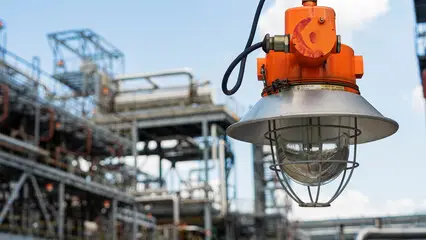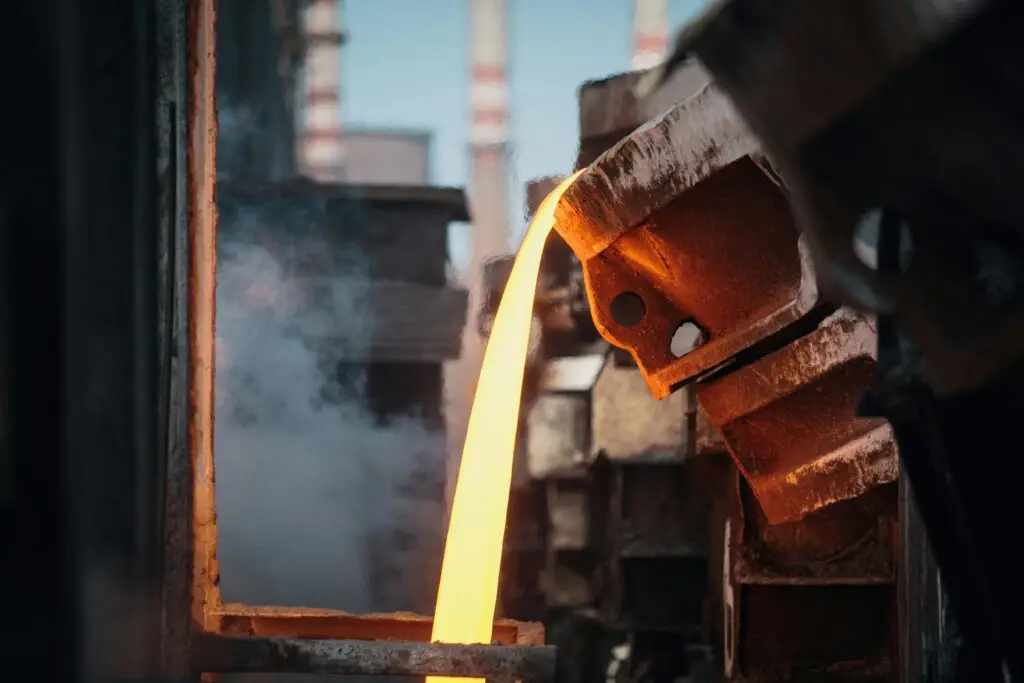Introduction
Explosion-proof lighting is essential in industrial environments where flammable gases, vapors, dust, or fibers are present. These specialized fixtures are designed to contain potential ignition sources, preventing explosions and ensuring workplace safety. Industries such as oil and gas, chemical processing, and mining rely on explosion-proof lighting to comply with National Electrical Code (NEC) Article 500-506 and UL 844 standards. This guide explores the importance of explosion-proof lighting, its key features, and compliance considerations for hazardous industrial settings.
What is Explosion-Proof Lighting?
Explosion-proof lighting is designed to prevent internal sparks or arcs from igniting surrounding hazardous materials. These fixtures are enclosed in robust, sealed housings that contain potential ignition sources, ensuring safety in volatile environments.
Key Design Features of Explosion-Proof Fixtures
- Sealed & Reinforced Housing: Prevents internal explosions from spreading.
- Corrosion-Resistant Materials: Typically made from die-cast aluminum or stainless steel.
- Tempered Glass Lenses: Withstand extreme temperatures and impact.
- Ingress Protection (IP) Ratings: IP65/IP66/IP67-rated for dust and water resistance.
Compliance & Regulatory Standards
1. NEC Classifications for Hazardous Locations
Explosion-proof lighting must meet NEC classifications for different industrial hazards:
- Class I: Flammable gases and vapors (e.g., refineries, chemical plants).
- Class II: Combustible dust (e.g., grain silos, flour mills).
- Class III: Ignitable fibers (e.g., textile mills, sawmills).
2. UL 844 Certification
- Verifies that explosion-proof fixtures meet electrical safety and ignition protection standards.
- Ensures compliance with hazardous location classifications.
3. ATEX & IECEx Standards
- ATEX Directive (Europe): Compliance for explosive atmospheres in EU regions.
- IECEx (International): Global standard for explosion-proof equipment.
Applications of Explosion-Proof Lighting in Industrial Settings
1. Oil & Gas Facilities
- Refineries, offshore rigs, and petrochemical plants require explosion-proof fixtures to prevent ignitions.
- High-lumen LED floodlights improve visibility in hazardous locations.
2. Chemical Processing Plants
- Vapors from solvents, fuels, and chemical reactions create ignition risks.
- Explosion-proof linear fixtures ensure compliance with safety regulations.
3. Mining & Tunneling Operations
- Methane gas and coal dust pose explosion hazards.
- Intrinsically safe LED lighting minimizes ignition risks.
4. Food Processing & Agricultural Facilities
- Flour, grain dust, and sugar particles are highly combustible.
- IP67-rated explosion-proof lighting withstands washdowns and dust exposure.
Choosing the Best Explosion-Proof Lighting
When selecting explosion-proof lighting for industrial settings, consider:
- Class & Division Rating: Match lighting to the specific hazardous environment.
- Mounting Options: Ceiling, wall, or pole-mounted fixtures for proper illumination.
- LED Efficiency: Reduces energy costs by up to 70% compared to HID lighting.
- Durability: Marine-grade aluminum and tempered glass ensure longevity.
- Smart Controls: Motion sensors and dimmable features optimize power use.
Conclusion
Explosion-proof lighting is critical for industrial safety, ensuring compliance with NEC, UL, and ATEX standards while preventing hazardous incidents. With advancements in LED efficiency, smart automation, and wireless control, the future of explosion-proof lighting will focus on enhanced energy savings and IoT-enabled safety monitoring.


